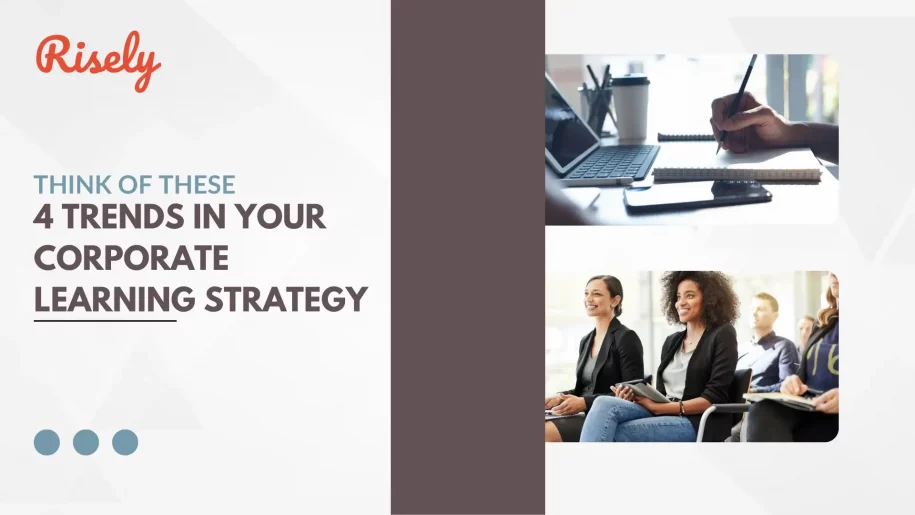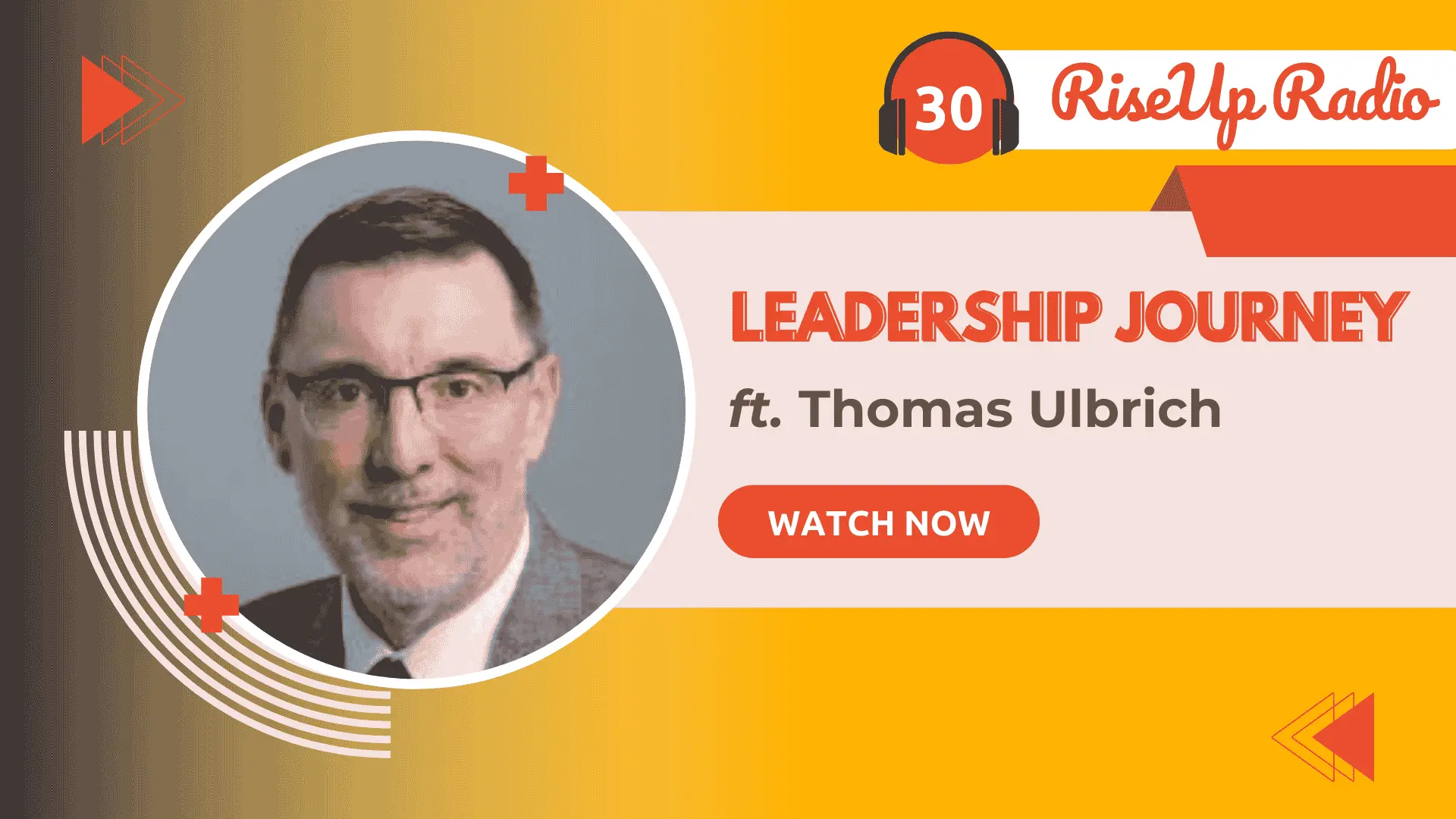Think Of These 4 Trends In Your Corporate Learning Strategy
Think of corporate learning, and the picture in your mind brings the worst of two worlds together:- It’s too rigid, like workplace structures.
- It’s too boring, like some classroom lectures.
- It’s often outdated, like educational curricula.
Corporate Learning Trends to Watch Out in 2025
This blog will highlight four main trends that are changing corporate learning and development. It will also show how you can use these trends to meet your company’s strategic objectives and reach your business goals.#1 AI is more than a buzzword!
Artificial intelligence (AI) is changing how companies teach their employees. It provides new and creative ways to make learning more personal. This is improving the learning experience for workers. As AI technology becomes better, we will likely see more advanced uses in corporate training programs. In a recent conversation with Inna Horvath, a learning strategist, we understood that the scope of corporate learning strategy is frequently misunderstood. Many L&D teams assume AI is about creating content at speed and scale, but that’s where the trouble comes in. AI struggles with originality and authenticity. The effective ways to integrate AI into a corporate learning strategy are sometimes different and surprising, such as creating personalized learning experiences for your employees or scaling up initiatives that rely on human presence right now. Inna’s shared a way to best sum up the idea: “The goal is not to substitute humans but to make AI your thought partner.”#2 Corporate learning or employee development?
It looks like a semantic difference, but the impact is bigger. Learning at work is not just another check box you can tick if you are able to. It’s doing much more for organizations in 2024. Your corporate learning strategy:- shapes experiences of employees
- contributes to employer brand
- is a factor in turnover and talent attraction
- offers you a competitive edge
#3 How’s the manager?
At least a few job tasks are set to be eliminated by AI; that’s true for managerial roles, which are assumed to be safe from technological advancements. AI in management is obviously not going to be a decision-maker. Still, it can be your team’s analyst or auditor with the capabilities it possesses today and will have shortly. Management jobs are also prone to layoffs quite heavily recently. The second point is that the new workers from the Gen Z are not keen on becoming managers. Wasn’t it the marker of success two decades ago? It surely was when my professional journey started. This disillusionment stems from the fact that people managers appear to be one of the most over-blamed and least supported parts of an organization. Did you get a layoff to announce? Call the manager. Two people argued? Call the manager. Everyone asks where the manager is, but no one asks how the manager is. It’s high time we think of that question more while planning a corporate learning strategy. This is particularly true for the people managers down in the trenches, sitting away from attention and watching yet another assigned webinar without any real-time support to overcome the emotional burden and stress that their role creates. A holistic learning approach looks at more than just technical skills. It includes emotional intelligence, social learning, and well-being. Companies are starting to see how important it is to create a learning culture. This culture helps workers grow and develop. When you focus on the whole person, they can build a more involved, strong, and flexible team. This method matches the idea of putting employee well-being first because it is key to success in an organization. Plus, training people to manage and lead others better brings twin benefits:- They can effectively manage teams and build further value for your organization. They are already attuned to your company’s norms and practices. They understand what good performance looks like and how it is created after experience as an IC (individual contributor). They can put themselves in the position of their team members. So you get good managers for your organization from a new generation of people known for being digital natives and curious, open minds.
- The second is great internal mobility and career progression. When such a system is in place, your employees know they have opportunities to grow, so they focus on achieving them rather than investing time searching for better avenues. Very few organizations are leveraging this effectively (the number stood at 15% as per a LinkedIn Learning Report), so you can stand out quite easily as a great place to work with a corporate learning strategy that offers holistic avenues for professional growth.
#4 Make yourself heard.
Cut down on training. That’s not the whole idea. Cut down on training that is proving ineffective. There’s little point in keeping up with annual training retreats, or three-day workshops, or webinars with that specific expert if you cannot see ROI. As per a CIPD survey, proving ROI and working with limited resources are among the top challenges in effective L&D at work. Training budgets are tightening up. The pandemic brought bad news in terms of steep budget cuts. A lot of learning programs regressed to online, in-house, one-size-fits-all models that advertised themselves with high distribution. Impact matters more than ever, so keep one phrase in mind for your corporate learning strategy of 2025: optimization. The key to getting this right lies in aligning with the business strategy (which LinkedIn also puts at #1 among L&D priorities) and focusing on bridging gaps (which CIPD highlights among the top priorities of the L&D function.) Tying up learning opportunities to performance management then becomes the first step. It calls for effectively identifying current skill gaps in the workforce, and predicting the future ones that are yet to arise. Don’t measure the success of your corporate learning strategy the old school way. Think of a holistic picture when it comes of ROI of training.Quantitative ROI
LinkedIn’s survey has clearly outlined that the voice of L&D is growing. The C-suite wants to hear it out. Show them what corporate learning can really do, and make your impact felt at the right level. That means:- investing in the measurement of outcomes, repetitively
- collecting data along the right metrics, don’t fall into the trap of vanity metrics like completion rates
- creating advocacy for learning from the participants themselves
- developing your analytical and human skills to present these cases strongly
- considering the value of risks you prevented (turnover, man-hours saved, etc.)
Qualitative ROI
Beyond that, the corporate learning strategy should also cater to the employee’s context. You need to ask questions like this before establishing an overarching corporate learning strategy:- Do they have the two hours to invest in a workshop? Or would giving them microlearning modules for a month be better?
- Is the area being taught more compatible with PowerPoint presentations or one-on-one coaching?
- How am I going to assess the impact of this? (Only about 5% of learning initiatives reach the measurement stage)
- How does this particular training impact our business objectives?
Wrapping Up
In conclusion, accepting the changing trends in corporate learning is key to keeping up in today’s quick world. We see more AI-focused personalized learning and ways that include emotional health. The scene is changing fast. Using short learning sessions, mobile tools, data tracking, and game-like elements can make learning more lively and effective. By adjusting to these trends, businesses can build a culture of continuous learning that supports growth and new ideas. Stay updated, stay flexible, and see your corporate learning strategy succeed in this digital age.Revamp your L&D strategy with a helping hand from Risely.
Download your free copy of Risely’s L&D strategy framework today and get started.
How to Build a Leadership Journey? ft. Thomas Ulbrich
Effective leadership doesn’t always begin with a grand vision. Sometimes, it takes root in the courage to take the first…
AI and Leadership Development: Driving Synergy for Growth
AI and Leadership Development: Driving Synergy for Growth You know the frustration all too well. Your organization invests thousands in…
How Are AI Learning Platforms Transforming Leadership Development?
As an L&D leader, you’re likely familiar with this frustrating reality: 82% of organizations consider leadership development critical(1), yet only…
5 Essential AI Skills for L&D Leaders
5 Essential AI Skills for L&D Leaders According to LinkedIn’s 2025 Workplace Learning Report(1), 71% of L&D professionals are now…
How to Create a Course with AI: A Guide for L&D Professionals
How to Create a Course with AI: A Guide for L&D Professionals According to a McKinsey survey(1), only 11% of…


